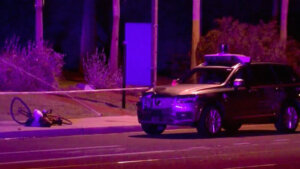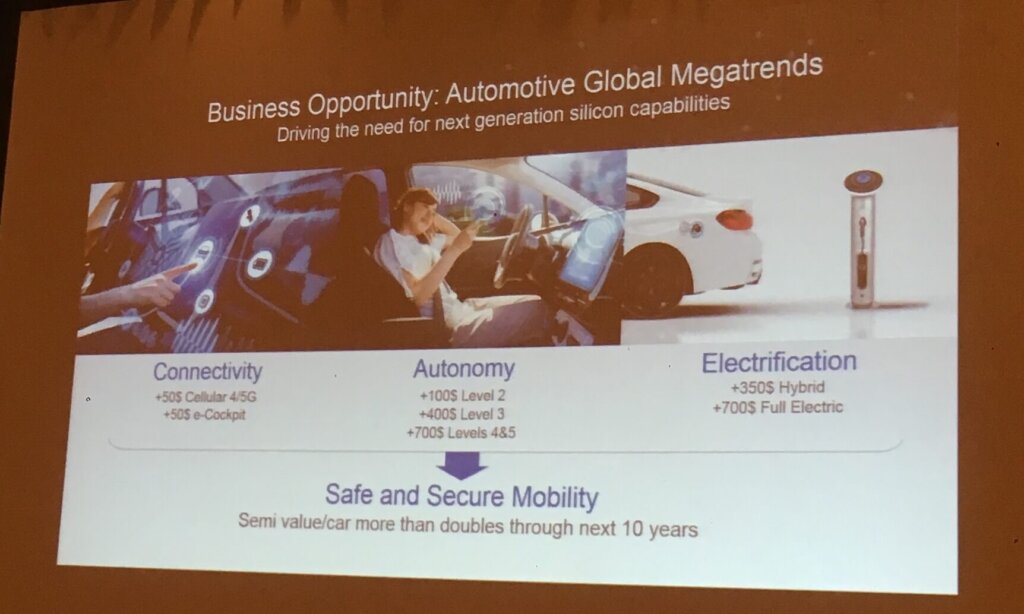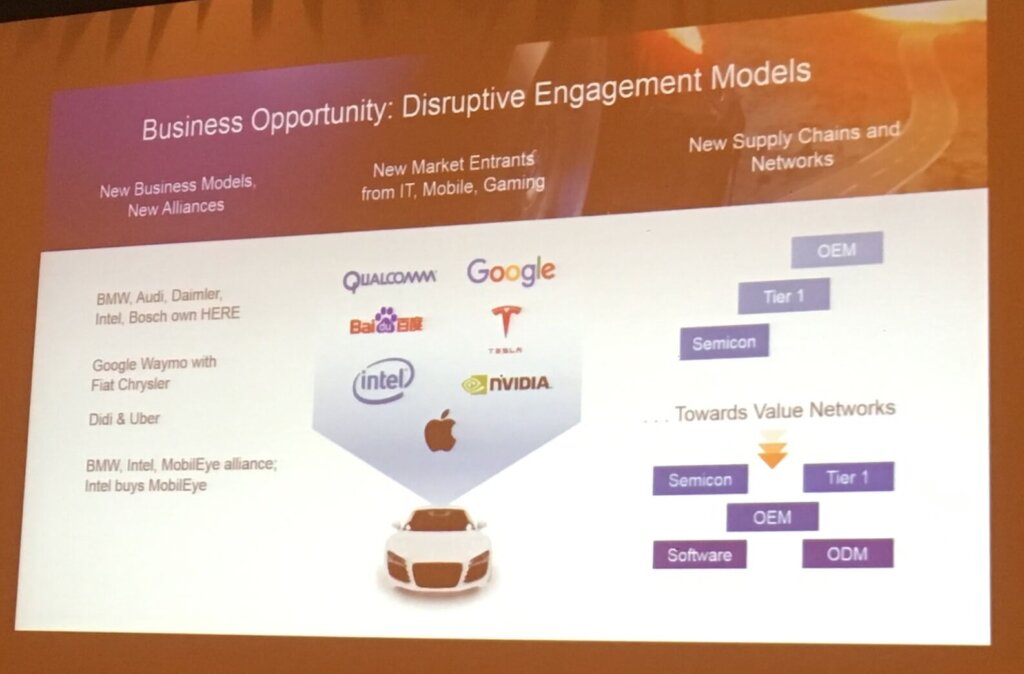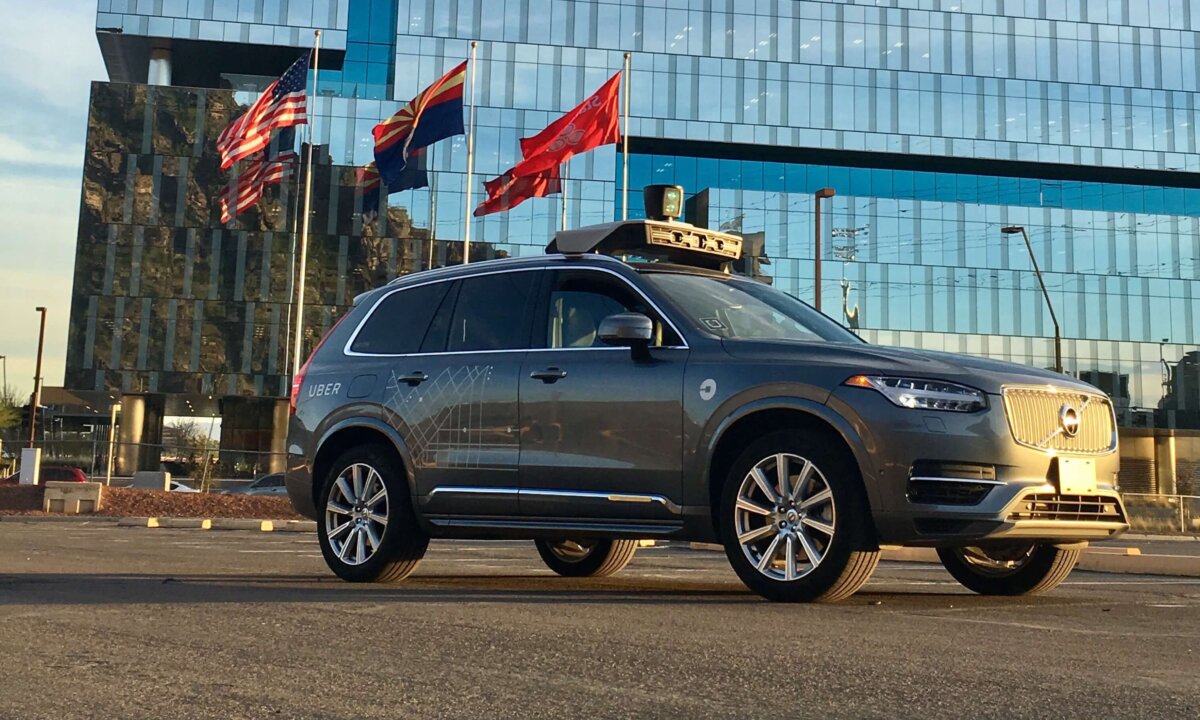How does the innovation of self-driving cars affect the business world we live in? This was the topic the iMAPS Global Business Council (GBC) chose to explore during its spring meeting two weeks ago, held in conjunction with the IMAPS Device Packaging Conference, March 6-8, 2018 in Fountain Hills, AZ. In traditional GBC fashion, the morning’s session started with a big-picture keynote presented by Glenn Daves, NXP Semiconductors, about the paradigm shift happening in automotive manufacturing in the ongoing quest to put autonomous vehicles on the road and build the business of self-driving cars. This was followed by market driver analyses by Jan Vardaman, of Techsearch International, Inc., for the advanced packaging sector; and Santosh Kumar, Yole Developpement, for the MEMS and sensor sector. Shawn Bowers, Amkor Technologies, discussed near-term progress in advanced packaging integration for automotive applications, and Venky Sundaram, Georgia Tech, talked about work being done in R&D to meet future needs of the various levels of autonomy.

We interrupt this regularly scheduled programming…
Two weeks ago when I first planned to write this blog post, I would have titled it “The Business of Self Driving Cars,” period. I would have answered the opening question by summarizing the key takeaways offered by all these speakers. Then early this week, I awoke to the news that an Uber driverless vehicle, with a human operator sitting at the wheel as required by law, struck and killed a pedestrian in Tempe, AZ, right in my backyard (figuratively speaking). This hit news feeds in a big way: billed as “the first pedestrian fatality due to an autonomous car.” Seriously? The FIRST? Are we supposed to expect more before we get this right? Suddenly, I found myself looking at the topic of the day in a completely different way.
According to police reports, a woman, 49-year-old Elaine Herzberg, appeared from the shadowy median and walked her bike across the street outside of the crosswalk into the path of the Uber, which was going 40mph in a 35mph zone. The driver, Raffaela Vasquez, who was reportedly unimpaired, did not take over control of the car and told police she did not have time to brake. According to this summary, the car had warned Vasquez to disengage the autopilot. Several accounts emphasized the points that Vasquez has a criminal record, and that the pedestrian may have been at fault.
Yes, she wasn’t supposed to be there. If the vehicle had been a regular car, the driver would likely not be held at fault as she was essentially jaywalking. But the fact remains if it’s true that autonomous vehicle sensing systems are more sensitive and quicker to react than humans, than the car should, at the very least, have slowed down. But it didn’t.
Living among robocars
I live in Phoenix, and I have driven side-by-side down the freeway with Waymo and Uber test vehicles. Knowing what I know about the work left to be done on so many levels, from the current limitations of the sensing devices to their packaging and the software to operate them, I keep a very wide berth.
Arizona has become the hotbed testing ground for companies who are in the race to the finish first in the race to introduce fully self-driving vehicles. Uber, Intel, Alphabet’s Waymo, and General Motors, are among those conducting testing programs in the Greater Phoenix area, lured by the weather, the state’s lax approach to regulations around this yet unproven technology, and Doug Ducey’s personal invitation to come to Arizona in 2015 to test their fleets. Waymo even announced late last year that they would begin testing without anyone behind the wheel in early 2018.
In the immediate aftermath of the fatal accident, Uber and Toyota have suspended all testing programs in Arizona and elsewhere. However, yesterday, Arizona officials said there was no reason to tighten the rules or pause programs. Waymo appears to be forging ahead and has been approved to launch a ride service sometime this year. GM, which also plans to launch a robo-taxi service next year in Arizona, says it is sticking to the timeline.
Call it what it is
Over the past few years, I have attended countless presentations promoting the development of autonomous vehicles. Every single one claims that the main motivation for developing autonomous vehicles is to reduce the number of traffic deaths per year. According to Daves, the number of traffic deaths is currently at 1.3M, and 90% of them are caused by human error. He claimed that autonomous vehicles have better senses than a human driver, and by automating driving decisions using artificial intelligence and machine learning, better decisions will be made and fewer deaths will occur.
I call BS. Call me cynical. but I would argue that the main motivation behind autonomous vehicle development is about building the business of self-driving cars because of the enormous revenue it will generate for pretty much everyone involved. There is even legislation underway to protect car companies from loopholes. The hope that the technology may turn out to save more lives than it loses is just a side benefit.
According to Daves in his GBC keynote, automotive growth will be explosive, with a 14.1% CAGR predicted between 2016-2020, resulting in a 40B market by 2021. Moreover, by 2020, semiconductor content will decrease in tablets, smartphones and PCs, but will increase in automotive applications. He said this spells opportunity for the industry, as demonstrated in these two slides.


Don’t get me wrong, I’m all for industry growth and generating revenue. But if the true motivation is saving lives, then why are all the automotive OEMs racing to be the first to bring level 5 autonomy to the market? If the motivation was primarily altruistic, they would err on the side of caution, rather than risk. And what will the backlash be on the semiconductor industry if we rush the development of the devices that provide the underpinnings of all these technologies?

Thank goodness there are voices of reason among us. “It doesn’t it doesn’t matter how soon autonomous cars are adopted,” noted Vardaman, during her GBC presentation. “The amount of semiconductor content required will be tremendous. But we’ve got work to do.” To demonstrate just how much work, she showed a snapshot of the Tesla that rear-ended firetruck while in autonomous mode and talked about all the challenges advanced packaging engineers need to solve to ensure device reliability. And this was BEFORE Sunday night’s accident.
“Safety standards and regulations being adapted to fully autonomous driving require more time. It can be a show stopper if we don’t take care of it up front,” cautioned Sundaram, in his GBC presentation. I think the recent accident is a testament to that. However, this opinion piece on CNN Tech by Timothy Carone, says that we need to learn from these accidents and that there will be more of them before we “eventually make driving much safer someday because it will take unpredictable human behavior out of the equation.”
Despite the rapid pace of technology development and the acceleration of the automotive industry to achieve level-5 autonomy, Yole’s Santosh Kumar predicted that fully replacing drivered vehicles with autonomous ones should take about 150 years. While at first, I questioned whether he meant 50 years, now I’m thinking he’s taken all this into consideration, and 150 years seems to be a reasonable amount of time.
Proceed with caution
So how does the innovation of self-driving cars affect the business world we live in? It should affect it by injecting caution into every decision made. I’m not suggesting we stop development on autonomous vehicles, or even take them off the road. I’m suggesting that if making our roads safer truly comes first, then we need to slow down and make mindful decisions about how we proceed, so that we achieve the final outcome: safer roads for all, without sacrificing lives along the way.
We need to erase the circle around 2020 as the target date for deployment. We need to be cautious about where the vehicles are tested and don’t take them to public roads until the systems work seamlessly. Test drivers need to be well-trained engineers, who understand what’s under the hood, not merely safety drivers who have gone through a two-week training program. Most importantly, car companies need to own their accountability, rather than look for loopholes. Then I might be convinced that the motivation for autonomous vehicle development is about saving lives first, and that turning a profit comes second. ~ FvT



















